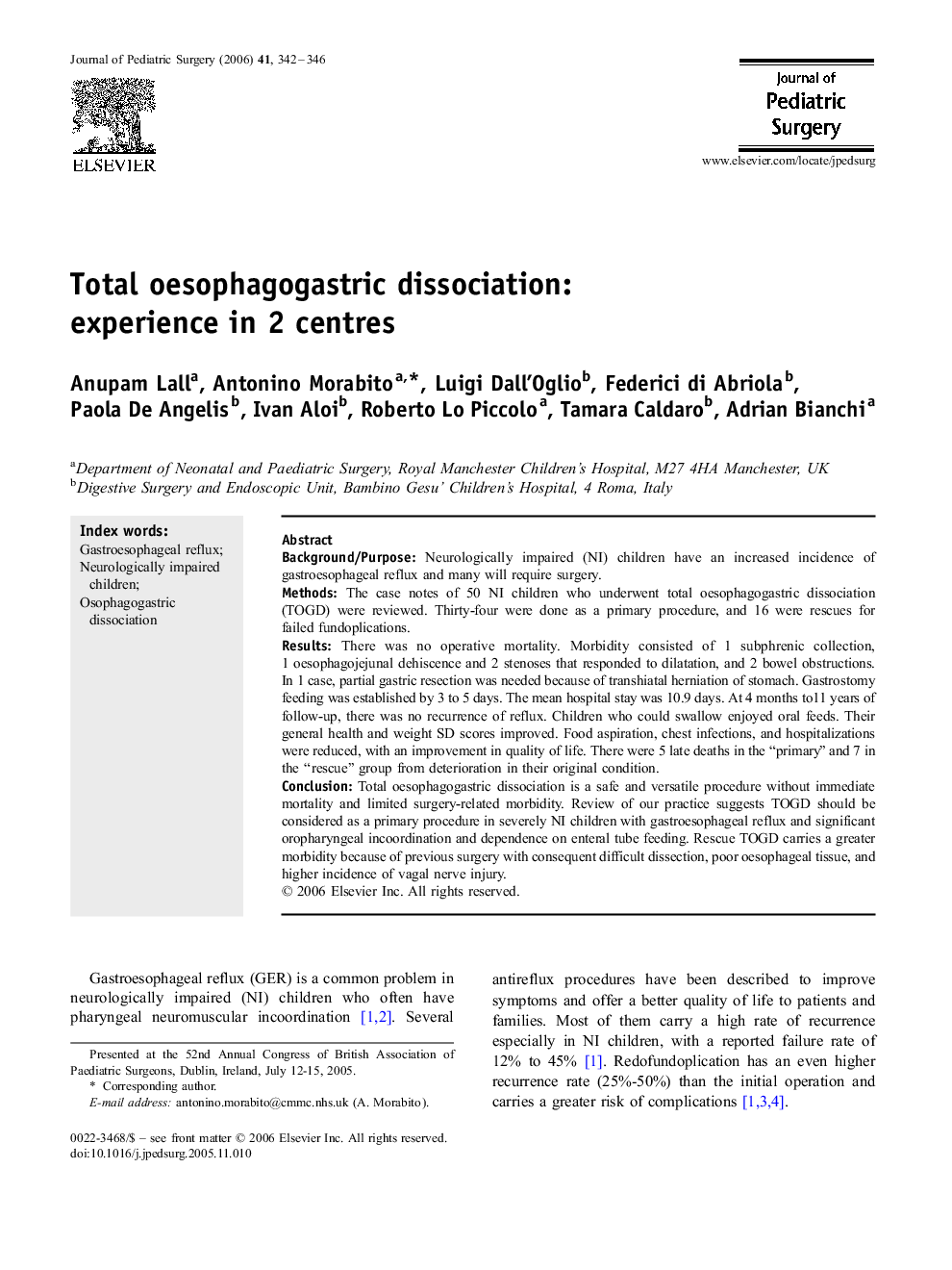| Article ID | Journal | Published Year | Pages | File Type |
|---|---|---|---|---|
| 4160983 | Journal of Pediatric Surgery | 2006 | 5 Pages |
Background/PurposeNeurologically impaired (NI) children have an increased incidence of gastroesophageal reflux and many will require surgery.MethodsThe case notes of 50 NI children who underwent total oesophagogastric dissociation (TOGD) were reviewed. Thirty-four were done as a primary procedure, and 16 were rescues for failed fundoplications.ResultsThere was no operative mortality. Morbidity consisted of 1 subphrenic collection, 1 oesophagojejunal dehiscence and 2 stenoses that responded to dilatation, and 2 bowel obstructions. In 1 case, partial gastric resection was needed because of transhiatal herniation of stomach. Gastrostomy feeding was established by 3 to 5 days. The mean hospital stay was 10.9 days. At 4 months to11 years of follow-up, there was no recurrence of reflux. Children who could swallow enjoyed oral feeds. Their general health and weight SD scores improved. Food aspiration, chest infections, and hospitalizations were reduced, with an improvement in quality of life. There were 5 late deaths in the “primary” and 7 in the “rescue” group from deterioration in their original condition.ConclusionTotal oesophagogastric dissociation is a safe and versatile procedure without immediate mortality and limited surgery-related morbidity. Review of our practice suggests TOGD should be considered as a primary procedure in severely NI children with gastroesophageal reflux and significant oropharyngeal incoordination and dependence on enteral tube feeding. Rescue TOGD carries a greater morbidity because of previous surgery with consequent difficult dissection, poor oesophageal tissue, and higher incidence of vagal nerve injury.
